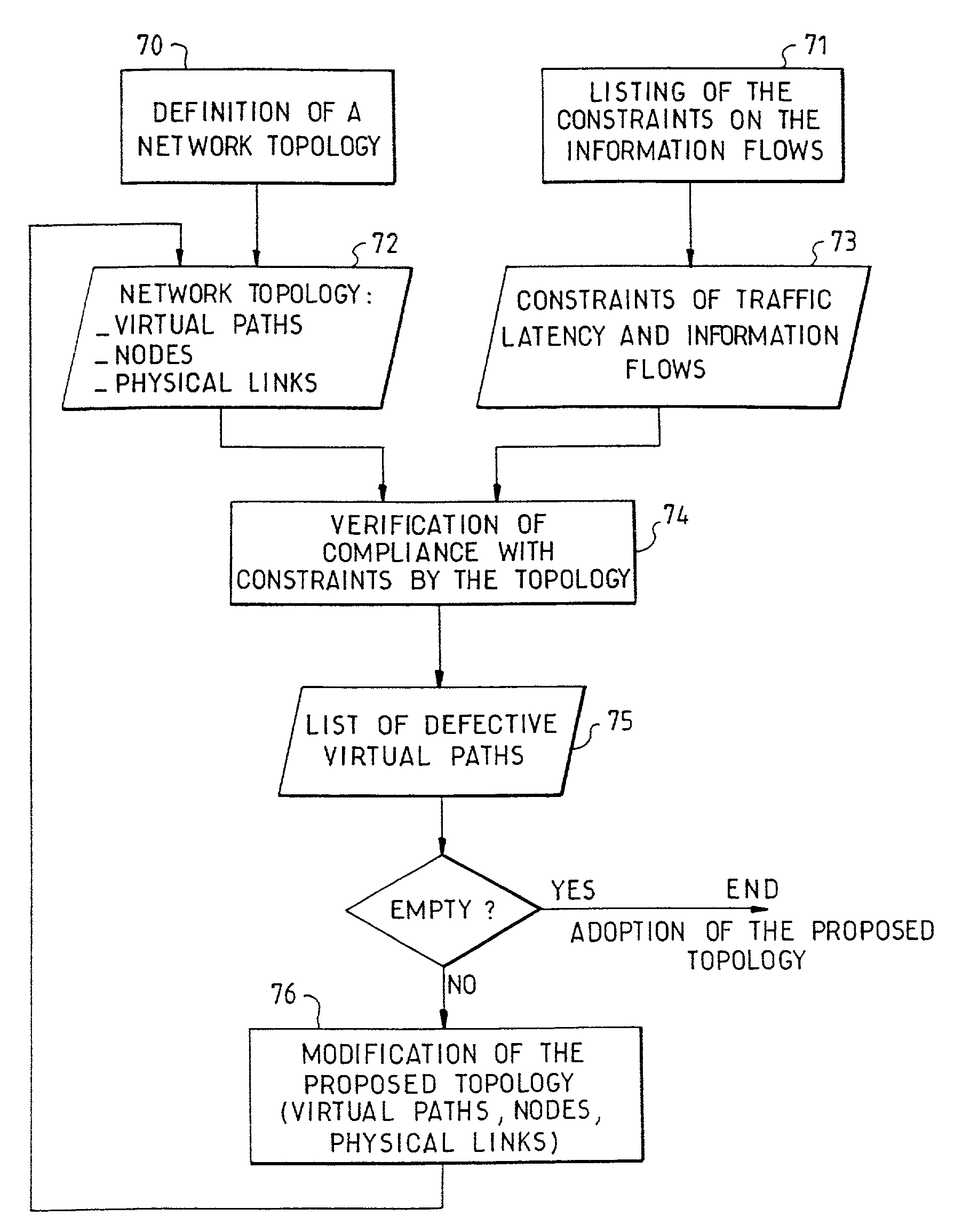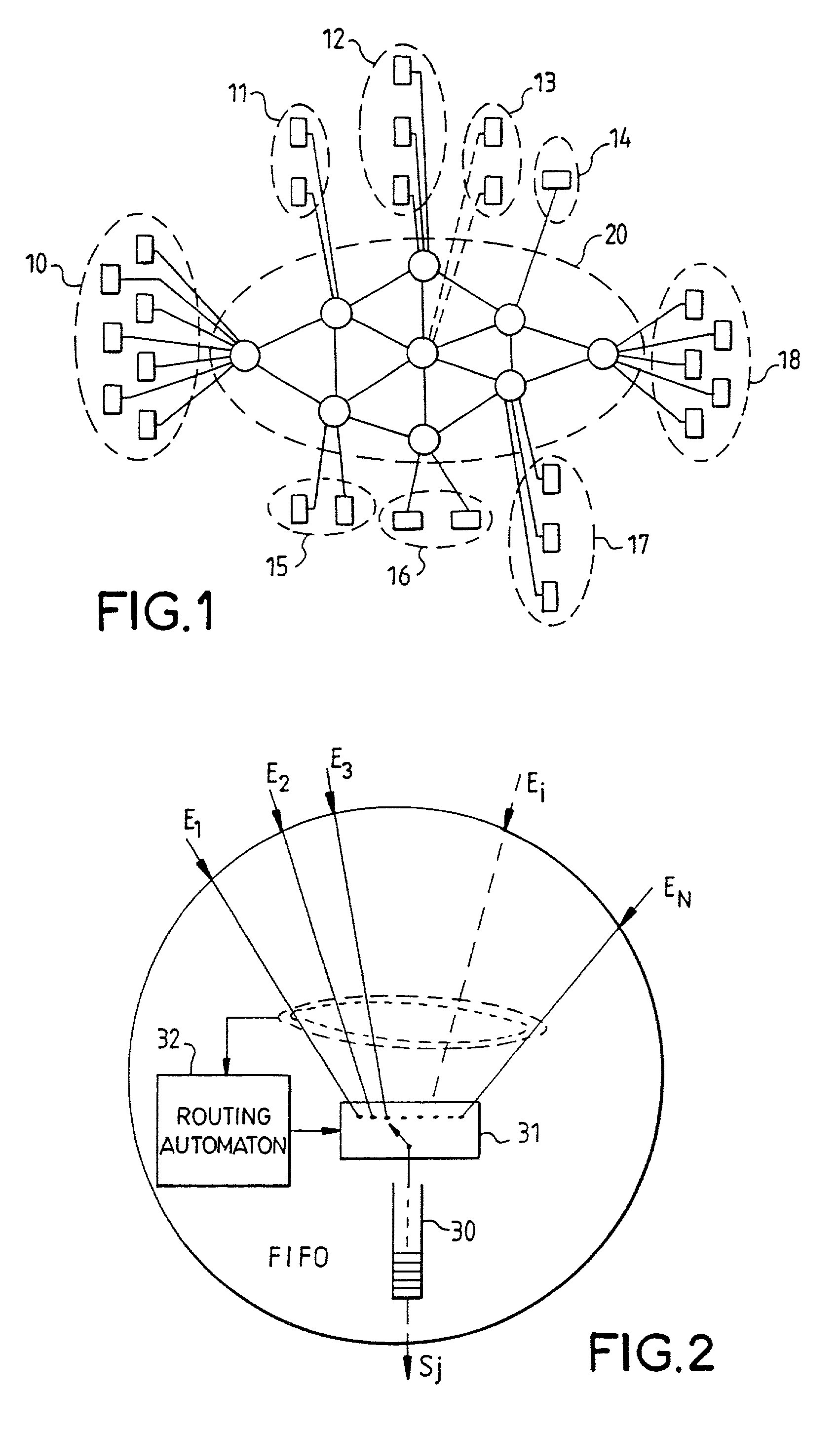Method for the sizing of a deterministic type packet-switching transmission network
a transmission network and packet-switching technology, applied in the direction of data switching networks, digital transmission, electrical equipment, etc., can solve the problems of disturbance or jitter increase, and insufficient deterministic nature of packet-switching transmission networks
- Summary
- Abstract
- Description
- Claims
- Application Information
AI Technical Summary
Benefits of technology
Problems solved by technology
Method used
Image
Examples
Embodiment Construction
[0033]FIG. 1 shows various sets of equipment 10 to 18 that communicate with one another by means of a packet-switching transmission network 20. The sets of equipment 10 to 18 are unequal in size and are geographically dispersed over a zone covered by the packet-switching transmission network 20 which is schematically represented by a mesh of interconnection nodes represented by circles and physical interconnection links represented by straight-line segments joining the interconnection nodes to one another. Each piece of equipment represented by a rectangle is connected to the packet-switching transmission node, at one or more interconnection nodes placed in the vicinity, by one or more physical interconnection links.
[0034]The packets are sent in the network by the sender periodically. Each packet is inserted into a time window and two successive packets occupy two successive windows. Each packet complies with a certain formalism or protocol that depends on the transmission network. ...
PUM
 Login to View More
Login to View More Abstract
Description
Claims
Application Information
 Login to View More
Login to View More - R&D
- Intellectual Property
- Life Sciences
- Materials
- Tech Scout
- Unparalleled Data Quality
- Higher Quality Content
- 60% Fewer Hallucinations
Browse by: Latest US Patents, China's latest patents, Technical Efficacy Thesaurus, Application Domain, Technology Topic, Popular Technical Reports.
© 2025 PatSnap. All rights reserved.Legal|Privacy policy|Modern Slavery Act Transparency Statement|Sitemap|About US| Contact US: help@patsnap.com



